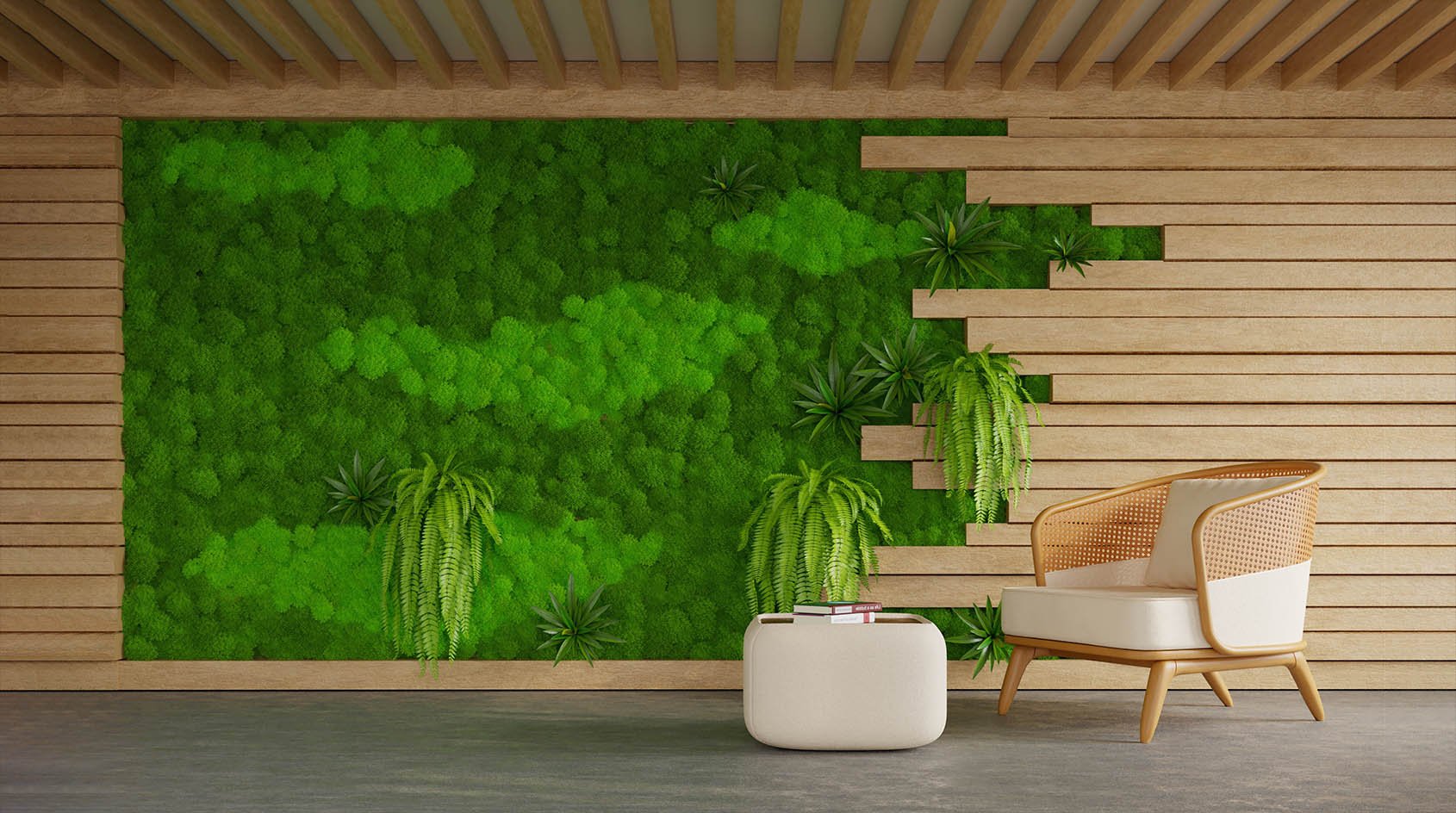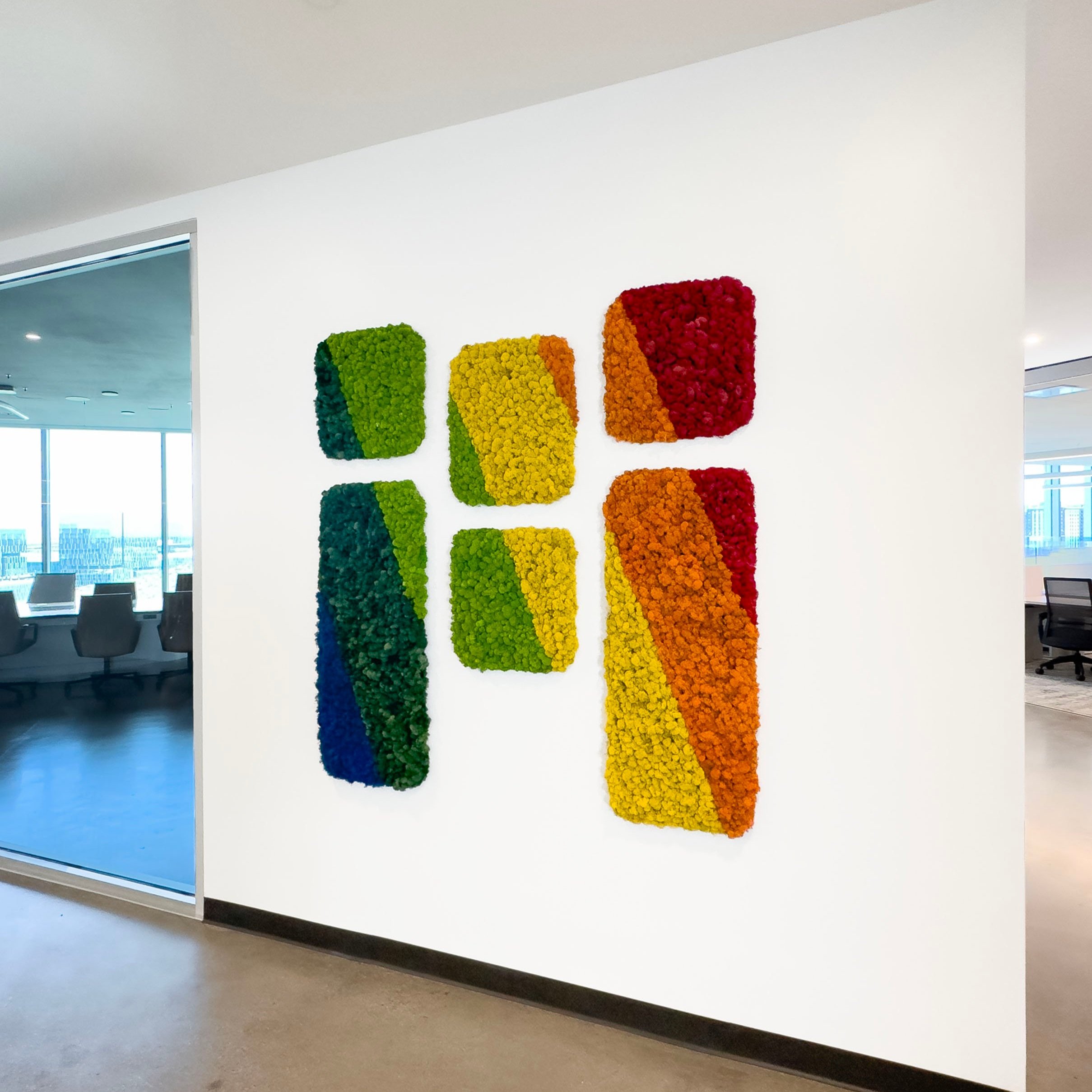Moss Wall 101: What Are Moss Walls and How Do They Work?
What Is A Moss Wall?
Moss walls are decorative wall coverings made of preserved moss applied to a backing. Generally moss walls are composed of panels that cover a significant area, as opposed to moss art or moss decor, which refers to smaller pieces that are hung as art objects. Moss walls are a popular alternative to living plant walls because they are low to zero maintenance and do not require light or water.
Are Moss Walls Living?
Most moss walls are made with preserved moss. So they are made with natural moss that was living, but is now preserved and no longer growing. The preservation process allows the moss to retain its natural look and texture, maintaining the “spongy” feel of natural moss. Some preserved mosses look more lifelike than others; while some look like they just came from a damp log deep in the forest, others may be dyed a rainbow of colors. Either way, naturally preserved moss - like the kind Vert Plantworks sources from responsible suppliers in the United States - is preserved with a natural, non-toxic glycerine solution. Different colors are achieved with non-toxic food-grade dyes.
How Are Moss Walls Made?
Each moss wall starts with a dedicated design comprised of one or more types of preserved moss. The common types of moss for moss walls are pillow or mood moss, sheet moss and reindeer moss. Designs can incorporate other materials such as preserved foliage or driftwood for different textural or sculptural effects. Reindeer moss is extremely malleable and takes dye well, so it is excellent for achieving a more detailed design, such as recreating a company logo in moss. The mosses are affixed to a panel backing with adhesive. In order to reproduce a custom design, first draw out the design on the backing and then lay out the moss before adhering. Panels are hung on the wall with picture hangers, or french cleats for larger panels.
Are Moss Walls Easy To Maintain?
Moss walls are exceptionally easy to maintain. The key to a healthy moss wall is proper placement. Moss walls work best in environments that preserve their color and freshness. They are happiest away from the harsh glare of direct sunlight. To preserve their naturally soft and spongy texture, ensure your moss wall is surrounded by moderate and stable humidity, as would be common in a temperate indoor environment. Aim to avoid hanging moss walls in the direct path of heating or cooling vents, as these blasts of air will have a drying effect.
What Are The Benefits Of Moss Walls?
The benefits of moss walls are similar to those of living plant walls. Moss walls provide natural beauty, while promoting a healthy interior environment by filtering air. Preserved moss can be effective at filtering VOC’s. Moss walls are also great for sound absorption, which makes them great for areas like conference rooms. In addition, because moss is light and can be applied to just about any hard backing, it is a great option for portable room dividers. Both moss walls and plant walls embody the benefits of biophilic design: by making us feel closer to nature, they can help us to de-stress and feel calmer, more inspired and more productive.
Ready to take the next step? Get started on your moss wall journey here, with more information on how we can help.







